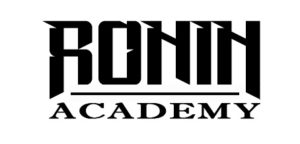Mindful Manoeuvres: The Profound Mental Benefits of Brazilian Jiu-Jitsu (BJJ)
Brazilian Jiu-Jitsu, a martial art that originated from traditional Japanese Jiu-Jitsu and Judo, has gained immense popularity not only for its effectiveness in self-defense and sport but also for its profound impact on mental well-being. Beyond the physical techniques and the thrill of the roll, BJJ offers a unique journey into the realms of mindfulness, resilience, and mental fortitude. In this article, we’ll delve into the mental benefits that practitioners can unlock on the mats.
Mindfulness and Present Moment Awareness:
Central to the practice of BJJ is the concept of mindfulness, the art of being fully present in the moment. During a roll, practitioners must focus on the immediate task at hand, reacting to their opponent’s movements and adapting their strategy on the fly. This heightened state of awareness fosters mindfulness, training the mind to concentrate on the present moment, leaving behind worries about the past or future.
Stress Relief and Anxiety Reduction:
Engaging in the physical and mental challenges of BJJ serves as an excellent stress-relief mechanism. The intense focus required during training helps individuals temporarily disconnect from the pressures of daily life, reducing stress and anxiety. The controlled environment of the mats provides a space for practitioners to channel their energy into the art, promoting mental well-being.
Problem-Solving and Critical Thinking:
BJJ is often likened to a physical chess match, where practitioners strategically plan their moves and anticipate their opponent’s reactions. The constant need to problem-solve on the mat enhances critical thinking skills. Practitioners learn to assess situations, make split-second decisions, and adjust their approach based on the dynamic nature of the roll. These problem-solving skills cultivated in BJJ can transcend the mats, benefiting various aspects of life.
Resilience and Learning from Failure:
In the world of BJJ, failure is an inherent part of the learning process. Every tap or unsuccessful submission attempt becomes a valuable lesson. Practitioners develop resilience as they face setbacks, learn from mistakes, and continually strive for improvement. This mindset of embracing failure as an opportunity for growth translates into resilience off the mats, fostering a positive approach to challenges in everyday life.
Increased Self-Esteem and Confidence:
BJJ provides a structured path for skill development, and as practitioners progress through belts, they experience a tangible sense of accomplishment. The mastery of techniques, the ability to execute effective moves, and the recognition of one’s progress contribute to increased self-esteem and confidence. These positive feelings cultivated through BJJ can extend beyond the academy, influencing how individuals perceive and approach various aspects of their lives.
Community and Social Connection:
BJJ academies often become tight-knit communities, fostering social connections and a sense of belonging. Training partners become friends, and the shared challenges and victories on the mats create a supportive environment. The camaraderie built within the BJJ community provides a valuable social outlet, reducing feelings of isolation and promoting positive mental health.
Emotional Regulation and Stress Management:
The controlled and disciplined nature of BJJ training can contribute to improved emotional regulation. Practitioners learn to manage adrenaline, control impulses, and maintain composure in challenging situations. These skills in emotional regulation can be applied beyond the mats, aiding individuals in navigating stress and maintaining a balanced emotional state and no doubt have long-lasting mental benefits hours after the training.
Mind-Body Connection:
BJJ emphasizes the integration of mind and body, requiring practitioners to be attuned to their physical sensations and mental states simultaneously. The awareness of breath, body positioning, and movement cultivate a strong mind-body connection. This heightened awareness can lead to a greater understanding of one’s body and mind, promoting overall well-being.
Goal Setting and Long-Term Focus:
BJJ, with its belt system and structured curriculum, encourages practitioners to set and pursue goals. Whether it’s mastering a specific technique or advancing to the next belt level, the pursuit of these goals instills a sense of purpose and long-term focus. This goal-oriented mindset extends beyond the academy, influencing how individuals approach challenges in their personal and professional lives.
Conclusion:
Brazilian Jiu-Jitsu transcends the physical realm, offering practitioners a transformative journey into the depths of mental well-being. Through mindfulness, stress relief, problem-solving, resilience, increased self-esteem, community connection, emotional regulation, mind-body integration, and goal-setting, BJJ becomes a holistic practice that enriches both the body and the mind. As individuals step onto the mats, they not only learn the intricacies of self-defense but also unlock the potential for profound mental growth and resilience, creating a positive impact that extends far beyond the academy walls and creates mental benefits that can last a lifetime.

